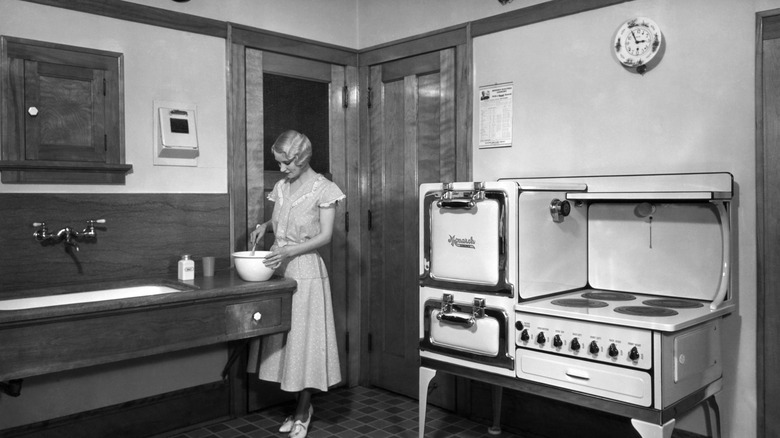The Vintage Kitchen Tool That Was Designed For A Very Specific Depression-Era 'Chicken' Dish
The Great Depression saw people reinvent the culinary wheel over and over again, breeding an era of creativity and scrappiness. From a long-forgotten breakfast soup to ending the day with some wacky cake, people went to great lengths to not lose their comfort foods. One such dish was called "city chicken" or "chicken sans volaille" (meaning chicken without poultry). The latter name referred specifically to the tool used to achieve the most realistic-looking mock-chicken, a chicken leg-shaped metal mold used to shape raw meat (usually veal or pork).
Chicken in the Depression era was not easily available within the city, whereas pork and other meats were, particularly in the meat-packing industry. This upped chicken's social cred, and consumers looked for a way to recreate their favorite fried chicken dish with more attainable and affordable foodstuffs. Nowadays, the cost of veal is steadily increasing beyond the norm, while fried chicken isn't hard to come by. But the roles were reversed a century ago, with poultry being more sought-after. This improvised dish saw cubes of meat loosely chopped and then packed into the metal mold, with a small hole at one end to fit in a skewer to ease cooking. The cooking process had regional variations, but the end result was a hearty, meaty dish that had a satisfying crunch and didn't stretch family budgets too far.
How to make city chicken
The vintage tool itself is not widely sold today, but you can find a handful for resale on various platforms. Luckily, there's a way to make city chicken without the mold. In both cases, start off with chunks of pork, veal, or a combination. If you have the molding tool, put your meat in a food processor and pulse it lightly to break it up a little. You can also do this by hand with a knife if you want a more authentic experience. Then, take your chicken sans volaille and clamp it around the meat, filling the mold, and cut aside any excess meat with a utensil. Insert the skewer into the designated hole and push it until you reach the end. Without the tool, skip this step and just skewer your meat, ideally increasing in chunk sizes towards the top (this will ultimately help with the optics of it resembling a chicken leg).
With your "chicken legs" prepped, there are a couple of variations for cooking. The standard is to cover them in egg, then in flour or seasoned breadcrumbs. Next, pan-fry them to brown on each side, then place them in the oven to bake through until fully cooked. You can skip the oven step altogether if you prefer and just fry them. A deep fryer would make the lightest work of this, but enough oil and butter in a skillet will also do the trick. Whichever method you choose, and whether you have the tool or not, this Depression-era hack might surprise you and even fool your fellow diners.


